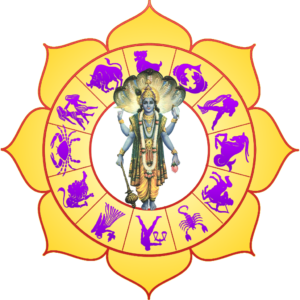BPHS Path
Why are we approaching the topics of BPHS in this manner?
 This is the manner in which we have learnt Bṛhat Parāśara Horā Śāstra and that is the exactly same manner in which we intend to teach this vedic classic. The present form of BPHS is the result of the efforts to bring together the lost book. Even at the heights of his fame, Varāhamihira did not have access to BPHS which can only mean that the book was not publicly available and only certain brāhmaṇa families held this sacred knowledge in secrecy. Later, fragmented chapters were recovered from all over North India and various versions of BPHS has been published, each with a few more chapters. We believe that the original had 108 chapters of which about 100 chapters are available.
This is the manner in which we have learnt Bṛhat Parāśara Horā Śāstra and that is the exactly same manner in which we intend to teach this vedic classic. The present form of BPHS is the result of the efforts to bring together the lost book. Even at the heights of his fame, Varāhamihira did not have access to BPHS which can only mean that the book was not publicly available and only certain brāhmaṇa families held this sacred knowledge in secrecy. Later, fragmented chapters were recovered from all over North India and various versions of BPHS has been published, each with a few more chapters. We believe that the original had 108 chapters of which about 100 chapters are available.
In fact the way BPHS is taught is that it starts with Chapter 3. Planetary Characteristics and then we arrive at the incarnations of the Lord Viṣṇu only at the end. Only then can we be in a position to understand the difference between the various incarnations.
In fact we have a very definite plan for PJC Year-1 in which we cover 28 Chapters of BPHS, which itself is no mean achievement, in a systematic manner. We first learn about the Graha, the Upagraha (including Aprakāśa graha), the signs (rāśi) and bhāva (houses).
We then bring these factors together in learning how the graha affect the rāśi and the bhāva, starting with the lordship of the rāśi and the effect of the placement of these rāśi lords as owning different bhāva, in other bhāva. This is critical to proper judgement of the chart.
Dṛṣṭi (aspect) is an important topic in this year. Rāśi dṛṣṭi is learnt in a very natural manner followed by graha dṛṣṭi. We also learn the exact difference between the two thereby being able to appreciate the reasons for having these two so different types of dṛṣṭi. We also learn to derive various significations of the planets based on these dṛṣṭi. For example, everyone knows intuitively that Mars, the warrior, also rules celibacy as boxers must remain celibate to be able to battle well in the ring. Yet can we derive this logically? Without the logical derivation of why Mars rules celibacy, we can never understand its power and influence. We can never extend this to brahmacārya.
There is so much more in the very first year or Parāśara Jyotiṣa Course. Are you willing to take the leap into this ocean of Jyotiṣa, then … start PJC Year-1.

 Lakshmi is a practising astrologer from Tirupati. As part of Jaimini India, she was one of the 3 teachers who taught Jaimini Upadesa Sutras at Bhimtal. She is a regular contributor to Jyotish Digest Magazine through her Vishnu Purana series.
Lakshmi is a practising astrologer from Tirupati. As part of Jaimini India, she was one of the 3 teachers who taught Jaimini Upadesa Sutras at Bhimtal. She is a regular contributor to Jyotish Digest Magazine through her Vishnu Purana series.  Pinnamaneni Bhanu Prasad became interested in Vedic Astrology when he met Smt. Lakshmi Ramesh during a visit to the holy temple city of Tirupati at the holy feet of Lord Venkateswara and Lord Shiva. This led to his study of Jyotish through the “Parāśara Jyotişa Course” with Pt. Sanjay Rath and qualification as “Jyotişa Paņḍita” from “Devaguru Brihaspati Center”. Bhanu also completed “Jaimini Scholar Program”...
Pinnamaneni Bhanu Prasad became interested in Vedic Astrology when he met Smt. Lakshmi Ramesh during a visit to the holy temple city of Tirupati at the holy feet of Lord Venkateswara and Lord Shiva. This led to his study of Jyotish through the “Parāśara Jyotişa Course” with Pt. Sanjay Rath and qualification as “Jyotişa Paņḍita” from “Devaguru Brihaspati Center”. Bhanu also completed “Jaimini Scholar Program”...
You must be logged in to post a comment.